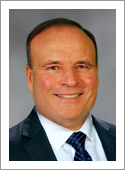The workers’ compensation line powered through the COVID-19 pandemic last year, generating an average profit of 24% while carriers built up $14 billion in “redundant reserves,” the National Council on Compensation Insurance said Tuesday during its virtual Annual Issues Symposium.
Chief Actuary Donna Glenn said clearly, the anxiety that NCCI expressed last year about the potential impact of COVID-19 was overblown.
“We feared that it could be devastating for the workers’ compensation system and it was not,” she said.

It was the fourth straight year that workers’ comp generated profits greater than 20% and also the fourth straight year that the combined ratio was under 90%. In the past 20 years, the average profits earned by workers’ comp averaged 9.2%.
Profits grew even as prices dropped. NCCI said only two of the 38 states that it administers (Alabama and Hawaii) increased rates last year and several states approved double-digit decreases. The average rate decrease was 8.7%.
Net written premiums for private carriers and state funds dropped 10% to a projected $37.8 billion. Residual market premium dropped to $800 million from $900 million.
Insurers have been cautious. NCCI estimates that carriers reserved more than necessary to pay claims in each of the past three years. For 2020, the amount in reserves was $14 billion more than necessary. That isn’t the norm. NCCI’s data shows that insurers underreserved each and every year from 2000 to 2017.
“What is very clear today is our workers’ compensation system remains strong,” Glenn said. “Despite the premium setback, we have historic levels of profitability and reserve strength.”
NCCI projects that COVID-19 claims cost workers’ comp insurers $260 million nationwide in 2020, but that amounted to only 2% to 3% of loss costs. In the meantime, claim frequency for injuries other than COVID dropped by 7%, almost double the average decline of 3.9% experienced from 2000 to 2019.
Claim severity was also muted compared to previous years. NCCI projects that medical lost-time severity will increase no more than 2%, or might actually decrease by about the same amount. Indemnity claim severity is projected to increase 3%, continuing a long-term trend that generally tracks wage inflation.
A presentation by Senior Actuary Nadege Benard-Ahrendts showed that the number of workers’ compensation claims for COVID-19 did not increase at the same rate as the number of cases in the general population. She said that while the nation experienced three surges where virus infections increased dramatically, during each of those surges daily workers’ comp COVID claims maxed out at about 300 per day.
“Now, we may see claims reported in early 2021 that actually happened back in December,” she said. “But we did not see a spike in COVID workers’ comp claims that matched the intensity of the broader population.”
Bernard-Ahrendts said 60% of the COVID-19 claims that were reported cost less than $1,500.
The nation’s 45 million healthcare workers, first responders and essential workers such as retail clerks filed 90% of the COVID-19 workers’ compensation claims. Bernard-Shrendts said NCCI actuaries expected that, but were not sure how widespread workplace infections would become.
“We were fearful at the beginning of the covid pandemic,” she said. “We were not sure exactly if we would see the worst-case scenario, and were thankful that we did not necessarily see the worst-case scenario.”

An improving economy may provide the workers’ compensation line with room to grow. Leonard F. Herk, a senior economist and executive director for NCCI, said the 10 million jobs that were lost during the pandemic are returning rapidly.
“Expectations drive behavior,” he said. “As people feel more comfortable about resuming activities they have deferred for fear of COVID — think of leisure, travel, but also major purchases like a car — then businesses can feel comfortable restoring normal levels of operation. So a widespread expectation of economic recovery boosts demand and supply together and that expectation is driving the hiring surge that started in February and continues today.”
Herk said some employers are concerned that workers won’t return to their jobs because a $300-per-week boost in unemployment benefits approved by the Biden administration won’t expire until September. He said the data doesn’t bear that out. He noted that jobs numbers are recovering in leisure and hospitality sector, which was the hardest hit by the pandemic and also the lowest paying industrial sector.
Herk said the April jobs report by the U.S. Labor reported disappointed many observers because only 266,000 new jobs were reported, compared to 916,000 in March. But Herk said the numbers are skewed because they are adjusted for seasonal changes in the labor market.
He said employers typically add to their payrolls every spring. The Labor Department subtracts those new jobs from the number reported so that only gains that surpass expectations are counted. He said if you don’t make that seasonal adjustment, you will find that actually 1,050,000 jobs were created in March and 992,000 in April.
“What is going on here is that actual new hires are very similar, almost identical in March and April, and both months are actually above or at 1 million new hires,” he said.
Was this article valuable?
Here are more articles you may enjoy.


 US Weather Service Merges Units as Staffing Pressure Rises
US Weather Service Merges Units as Staffing Pressure Rises  The Changing ADA Lawsuit Landscape: Things Claims Professionals Need to Know
The Changing ADA Lawsuit Landscape: Things Claims Professionals Need to Know  Fed’s Powell Says Tariff Impact Likely to Be Larger Than Expected
Fed’s Powell Says Tariff Impact Likely to Be Larger Than Expected  Trump’s Tariffs Threaten to Endanger the Cheap American Car
Trump’s Tariffs Threaten to Endanger the Cheap American Car 